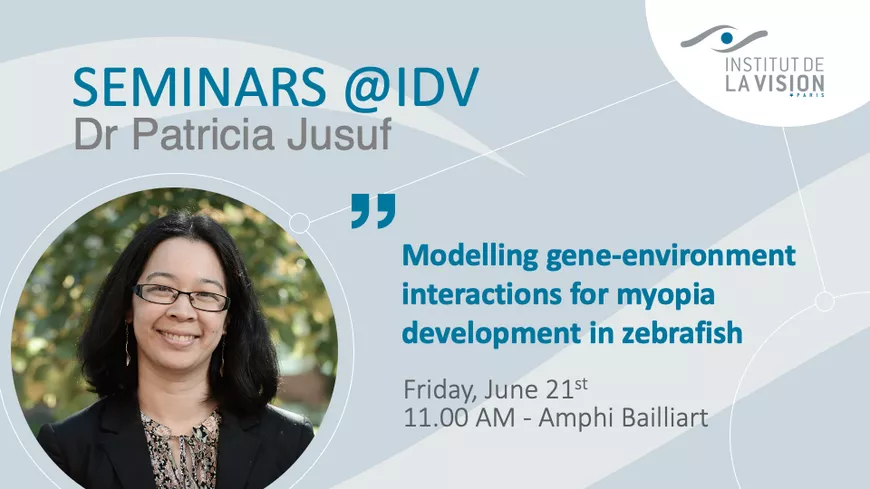Modelling gene-environment interactions for myopia development in zebrafish
Invited by Filippo Del Bene, Dr Patricia Jusuf (University of Melbourne, Australia) will give a speech on Friday, June 21st at 11am. Meet in the Amphithéâtre Bailliart, 3rd floor of the Hôpital national des 15-20.

Myopia is predicted to impact approximately 5 billion people by 2050, necessitating urgent understanding of the mechanism underlying myopia development. Myopia occurs when emmetropisation fails to match eye size to its optic power during development, due to both genetic risk variants and aberrant visual environments. Key environmental factors driving the rapidly increasing myopia prevalence include near-work, reduced range of colour vision, and reduced light intensity exposure (such as those mandated during COVID-lockdowns). How genetic risk factors interact with such environmental cues is poorly understood, primarily because animal models that allow this at a large scale have not been available.
We have now established myopia rearing and genetic zebrafish model to provide a relatively high throughput system. We focus on genes involved in the visual processing pathways in the retina that are also integrating visual cues to modulate emmetropisation. We study the phenotype using anatomical, genetic, physiological and behavioural assessments.
In this talk, I will summarise our work on various models of myopia with a focus on colour vision processing. The strong environmental influences on myopia have driven a myopia endemic, but also represents a potential for developing large scale non-invasive visual exposure therapy to counteract myopia.
About Patricia Jusuf
Patricia Jusuf obtained her PhD studying the colour blindness in new and old world monkeys from the University of Melbourne. Being keen to explore the developmental processes that give rise to our highly organised, yet complex visual system, she joined Prof. Harris’ lab at the University of Cambridge working on retinal development in zebrafish as a CJ Martin fellow. Upon her return to Australia, she established her research program at the Australian Regenerative Medicine Institute, where she expanded her work into comparative studies of development and regeneration. In 2016 she gained a tenured lectureship at her alma mater where she leads a research group on “Neural development and regeneration” again at the University of Melbourne, Australia.
